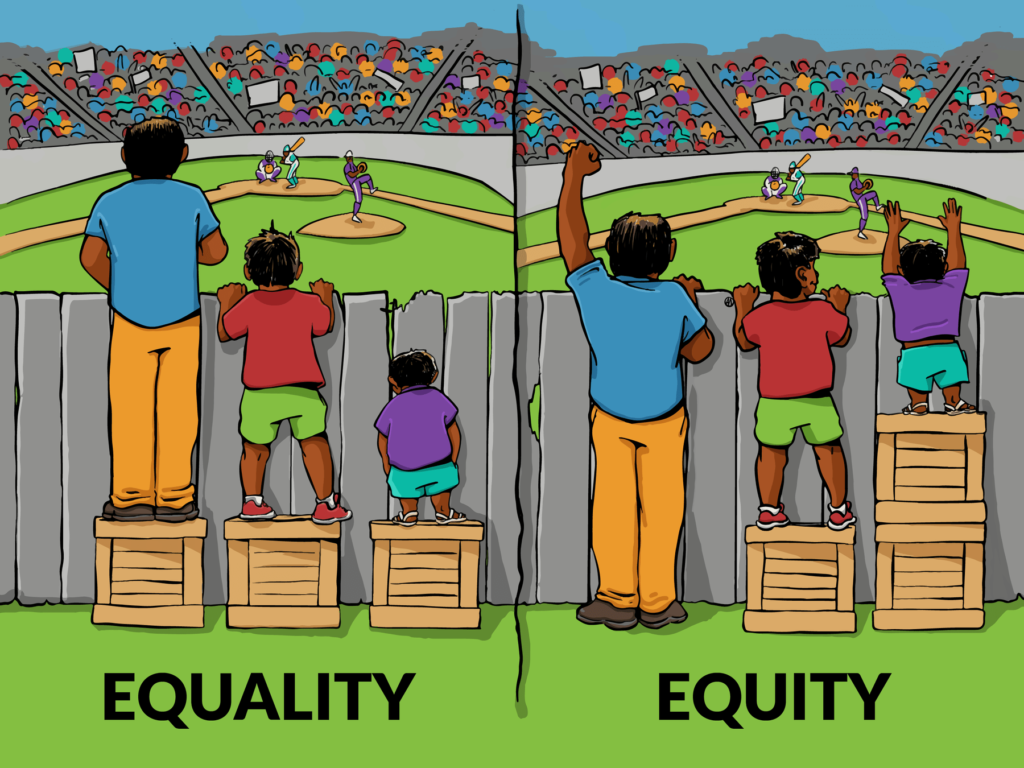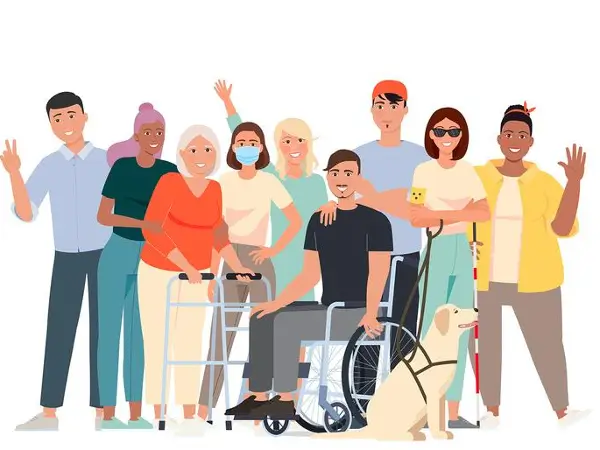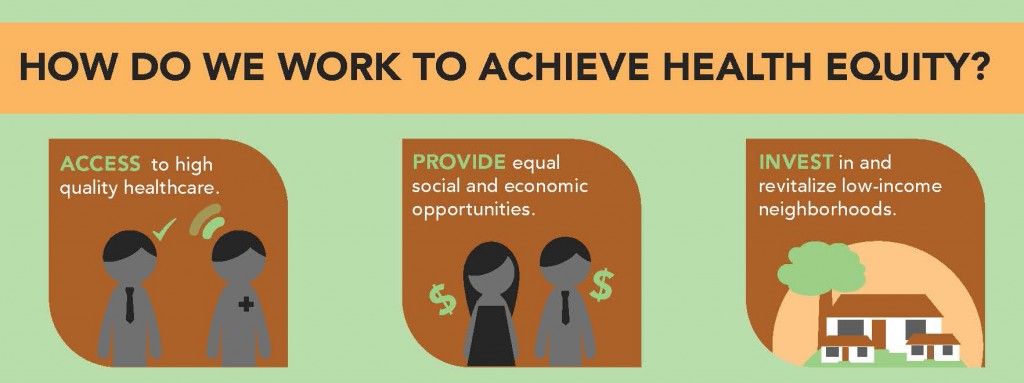Introduction
Understanding the concept of health equity is essential for creating a fair and just healthcare system. In this article, we will delve into the intricacies of health equity, explore its importance, and provide simple steps to help you master this concept overnight.
I. Defining Health Equity

Health equity refers to the fair distribution of healthcare resources and opportunities for everyone, regardless of their socio-economic status, race, gender, or other social determinants of health.
II. The Root of Health Inequities
Structural Factors Impacting Health Equity
- Socioeconomic Status: Socioeconomic disparities play a significant role in health inequities, as individuals from lower-income backgrounds have limited access to quality healthcare resources.
- Education Gap: Disparities in education also contribute to health inequities, as a lack of education can lead to poor health outcomes and limited health literacy.
- Discrimination and Stigma: Discrimination and stigma based on race, ethnicity, gender, or other factors can result in limited access to healthcare services and contribute to poor health outcomes.
- Access to Healthcare: Inadequate access to healthcare infrastructure, including healthcare facilities and services, further widens health inequities.
- Historical factors, such as slavery, colonization, and systemic racism, have perpetuated health disparities that persist to this day. Understanding the historical context is crucial in addressing health inequities effectively.
III. Identifying Health Disparities

Various factors contribute to health disparities, which highlight the unequal distribution of resources and health outcomes among populations.
Racial and Ethnic Disparities: Racial and ethnic minorities often experience higher rates of unmet healthcare needs, chronic diseases, and shorter life expectancy compared to their counterparts.
Gender Disparities: Gender disparities in healthcare access and outcomes persist, with women facing unique challenges related to reproductive health, access to contraception, and gender-based violence.
Disparities Among Different Age Groups: Health inequities can vary across different age groups, with children, adolescents, and the elderly often facing specific challenges related to access to healthcare services and age-related illnesses.
Geographical Disparities: Access to healthcare resources can vary significantly based on geographical location, with rural and remote areas often facing limited infrastructure and healthcare services.
Assessing Intersectionality: Intersectionality recognizes that individuals may simultaneously experience multiple forms of discrimination and oppression, which can compound the effects of health disparities.
IV. The Impact of Health Inequities
Understanding the implications of health inequities is crucial for creating meaningful change and advocating for health equity.
Negative Effects on Individuals: Health inequities lead to disparate health outcomes, leaving individuals facing greater risks of diseases, disability, and mortality.
Community-wide Consequences: Health inequities also have broader community impacts, as they perpetuate cycles of poverty, limit socioeconomic growth, and reduce overall well-being.
Economic Implications: Health inequities place an economic burden on societies, as disparities in health outcomes result in increased healthcare costs and reduced workforce productivity.
V. Steps to Achieve Health Equity

To promote health equity, several essential steps can be taken at individual, community, and policy levels.
Promoting Health Literacy: Enhancing health literacy can empower individuals to make informed decisions about their health and navigate the healthcare system effectively.
Addressing Social Determinants of Health: Tackling the underlying social determinants of health, such as poverty, housing instability, and food insecurity, is crucial for achieving health equity.
Educational Initiatives for Healthcare Providers: Healthcare providers need to receive comprehensive education and training on health equity to ensure they deliver culturally competent and inclusive care to all patients.
Culturally Responsive Care: Culturally responsive care recognizes and respects the diverse beliefs, values, and practices of individuals, promoting equity and reducing disparities in healthcare access and outcomes.
Empowering Marginalized Communities: Empowering marginalized communities through community-based initiatives, resource allocation, and building partnerships can help bridge the gap in health equity.
VI. Public Health Policies and Interventions
Achieving health equity requires a multi-faceted approach, with public health policies and interventions playing a crucial role.
Federal Efforts: Governments at the federal level should prioritize health equity by implementing policies that promote access to quality healthcare for all individuals, regardless of their background.
State and Local Initiatives: State and local governments can design and implement tailored initiatives to address the specific health disparities in their communities.
Community-Based Organizations: Community-based organizations play a significant role in advocating for health equity, as they can effectively address the unique needs of marginalized populations.
Embracing innovative approaches: Such as leveraging technology and implementing evidence-based interventions, can lead to more effective and sustainable health equity solutions.
VII. Data Collection and Analysis
Collecting and analyzing data is essential in identifying and addressing health inequities effectively.
Importance of Data in Identifying Inequalities: Accurate and comprehensive data provides insights into the extent of health disparities and helps in creating targeted interventions.
Metrics for Assessing Health Equity: Adopting standardized metrics and indicators enables policymakers to monitor progress and evaluate the impact of interventions aimed at reducing health inequities.
Capturing Disaggregated Data: Disaggregated data, categorized by various social determinants of health, ensures a comprehensive understanding of health disparities among different populations.
Technology’s Role in Data Collection: Utilizing technology, such as electronic health records and data analytics, can streamline data collection processes, improve accuracy, and support evidence-based policy decisions.
VIII. Collaborative Partnerships
Building collaborative partnerships is crucial in advancing health equity efforts.
Building Alliances and Partnerships: Establishing alliances between healthcare organizations, community groups, and advocacy organizations can create a united front in addressing health inequities.
Engaging Communities and Grassroots Organizations: Engaging communities and grassroots organizations help ensure that health equity initiatives are driven by the needs, values, and priorities of the populations they aim to serve.
Corporations as Healthcare Allies: Private sector involvement, including corporations, can contribute to health equity by investing in community health programs, promoting workplace wellness, and advocating for policy changes.
Cross-Sector Collaboration: Collaboration between multiple sectors, such as healthcare, education, housing, and transportation, empowers a holistic approach to address health inequities.
IX. Overcoming Barriers to Health Equity
Numerous barriers hinder the achievement of health equity. Identifying and addressing these barriers is crucial for progress.
- Cultural Competence and Sensitivity Training: Healthcare providers should receive cultural competence and sensitivity training to reduce bias and ensure equitable care for diverse patient populations.
- Insurance Coverage and Accessibility Options: Expanding insurance coverage and improving accessibility options for healthcare services increase the chance of underserved populations receiving necessary care.
- Affordable Medication and Treatment: Implementing policies to enhance the affordability of medications and treatment options removes financial barriers that contribute to health inequities.
- Transportation and Healthcare Access: Improving transportation infrastructure and access to healthcare facilities in underserved areas can bridge geographical health disparities.
- Combatting Racism and Discrimination in Healthcare: Actively combating racism and discrimination in healthcare settings is crucial to achieving health equity for all individuals.
X. Promoting Health Equity in Specific Populations
To achieve health equity, it is essential to address specific populations’ unique needs and challenges.
- Children and Adolescents: Ensuring access to quality healthcare, education, and protection from harmful environments is crucial in promoting health equity among children and adolescents.
- Minority Communities: Tailored interventions focusing on the specific needs of minority communities can help reduce health disparities and improve health outcomes.
- LGBTQ+ Individuals: Addressing healthcare disparities faced by LGBTQ+ individuals, such as discrimination, access barriers, and lack of provider knowledge, is fundamental to achieving health equity.
- Elderly Populations: Geriatric healthcare services, social support, and policies that address the specific needs of elderly populations contribute to health equity in older individuals.
- Individuals with Disabilities: Removing physical and attitudinal barriers, providing accessible healthcare facilities, and promoting inclusive care contribute to health equity for individuals with disabilities.
XI. Global Perspectives on Health Equity
Sharing best practices and lessons learned from global experiences is essential in advancing health equity worldwide.
Sharing Best Practices Around the World
- Collaboration and sharing of best practices internationally provide opportunities to learn from successful initiatives and adapt them to local contexts.
- International Organizations Fighting for Equity: International organizations, such as the World Health Organization, play a crucial role in advocating for health equity and implementing global policies to address disparities.
- Lessons Learned from Global Experiences: Learning from successful interventions and overcoming challenges experienced in different countries can inform and strengthen health equity efforts globally.
XII. Challenges and Future Directions
Acknowledging the challenges and focusing on future directions enables sustained progress toward health equity.
Addressing Implicit Bias and Stereotypes: Tackling implicit bias and stereotypes within healthcare systems is essential for providing equitable care and reducing health disparities.
Funding and Resource Allocation: Adequate funding and resource allocation are necessary to support health equity initiatives and sustain progress in addressing health disparities.
Political Will and Policy Changes: Political commitment and policy changes at all levels of government are crucial for advancing health equity and driving systemic change.
Sustaining Progress for Long-Term Impact: Sustaining progress requires ongoing commitment, monitoring, and evaluation to ensure that health equity remains at the forefront of public health agendas.
XIII. Summary: Your Path to Change
In summary, achieving health equity is a multi-faceted journey that requires collective effort. Here are the key takeaways and actions individuals can take to support this endeavor:
Key Takeaways
- Health equity ensures fair distribution of healthcare resources and opportunities for all individuals.
- Health disparities stem from structural factors, historical context, and social determinants of health.
- Health inequities have significant impacts on individuals, communities, and economies.
Actions Individuals Can Take
- Educate yourself and others about health equity and the factors contributing to health disparities.
- Advocate for policies that address social determinants of health and promote health equity.
- Engage in community-based initiatives and support organizations working towards health equity.
Urging Collective Responsibility
Health equity requires collective responsibility and collaborative efforts from individuals, communities, policymakers, and various sectors to create a fair and just healthcare system for all. Let us embark on this journey together and work towards a healthier and more equitable future.








